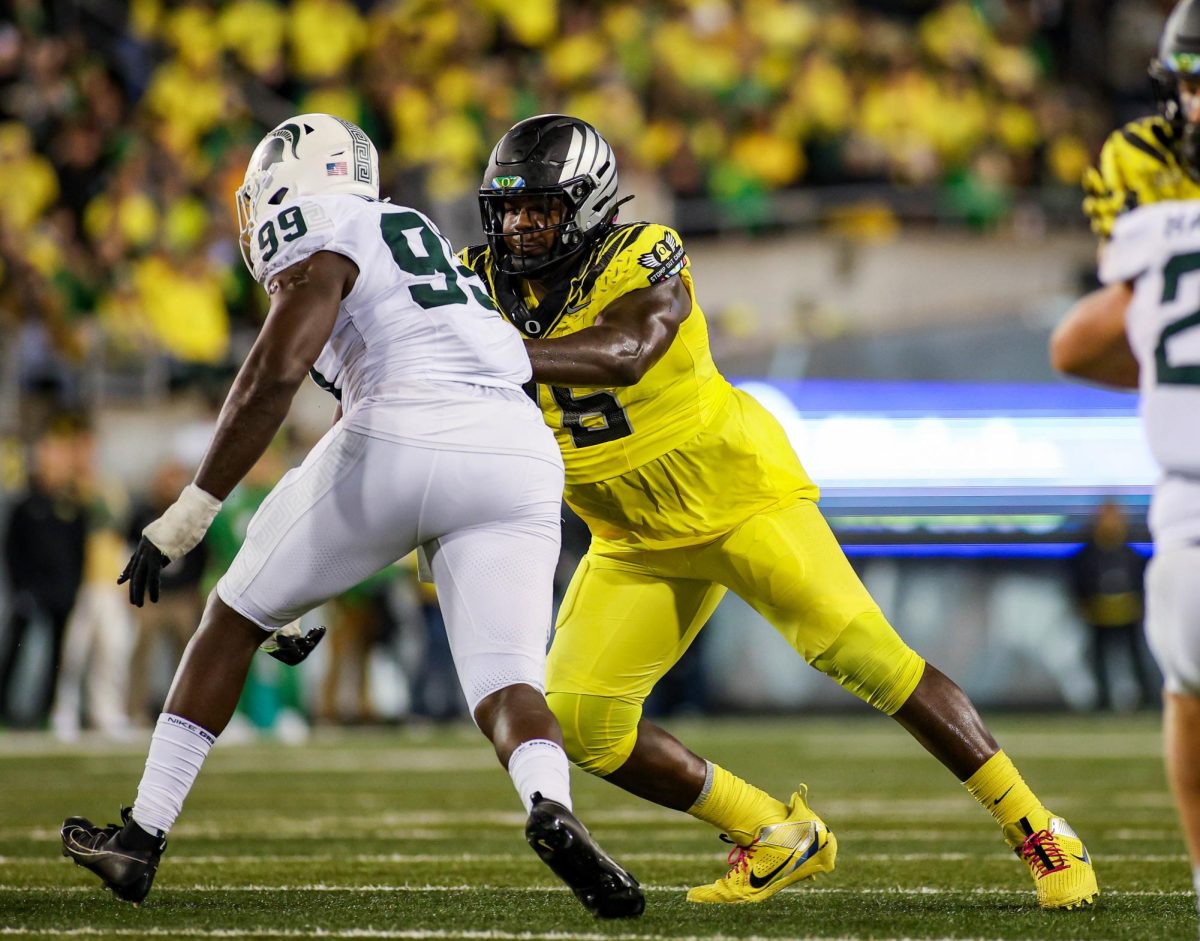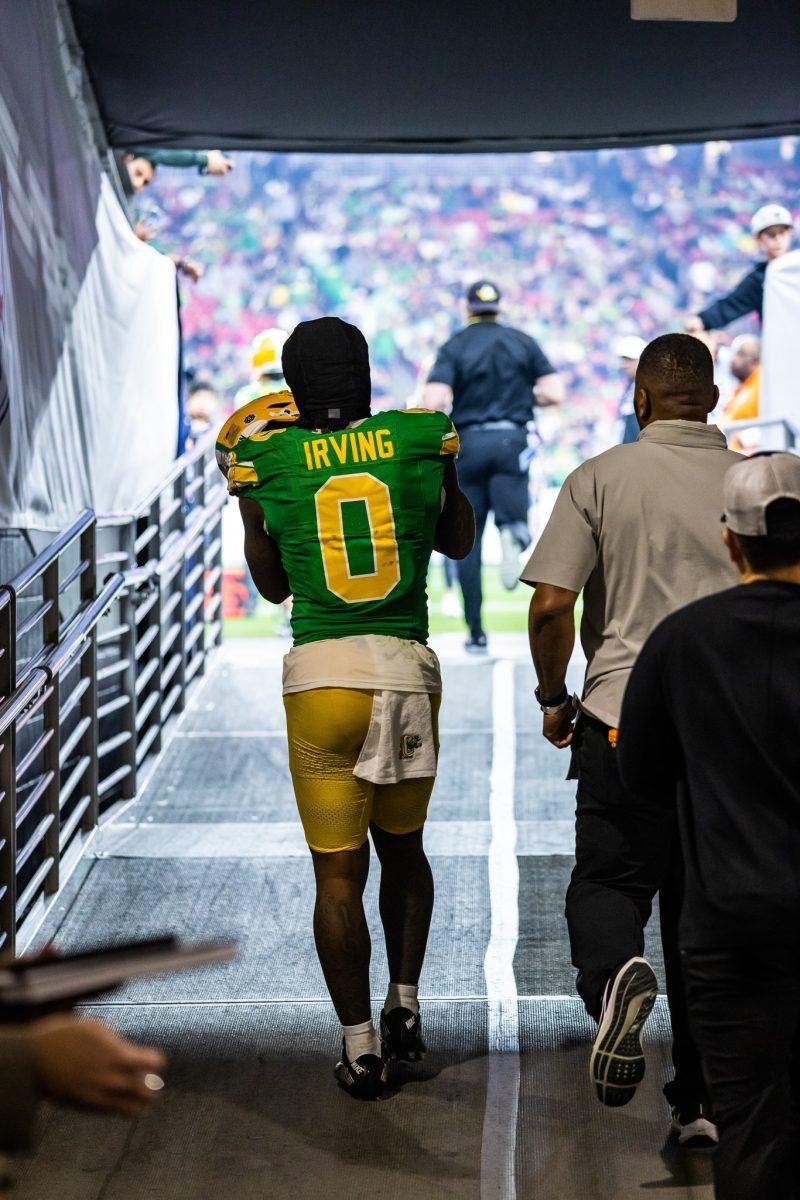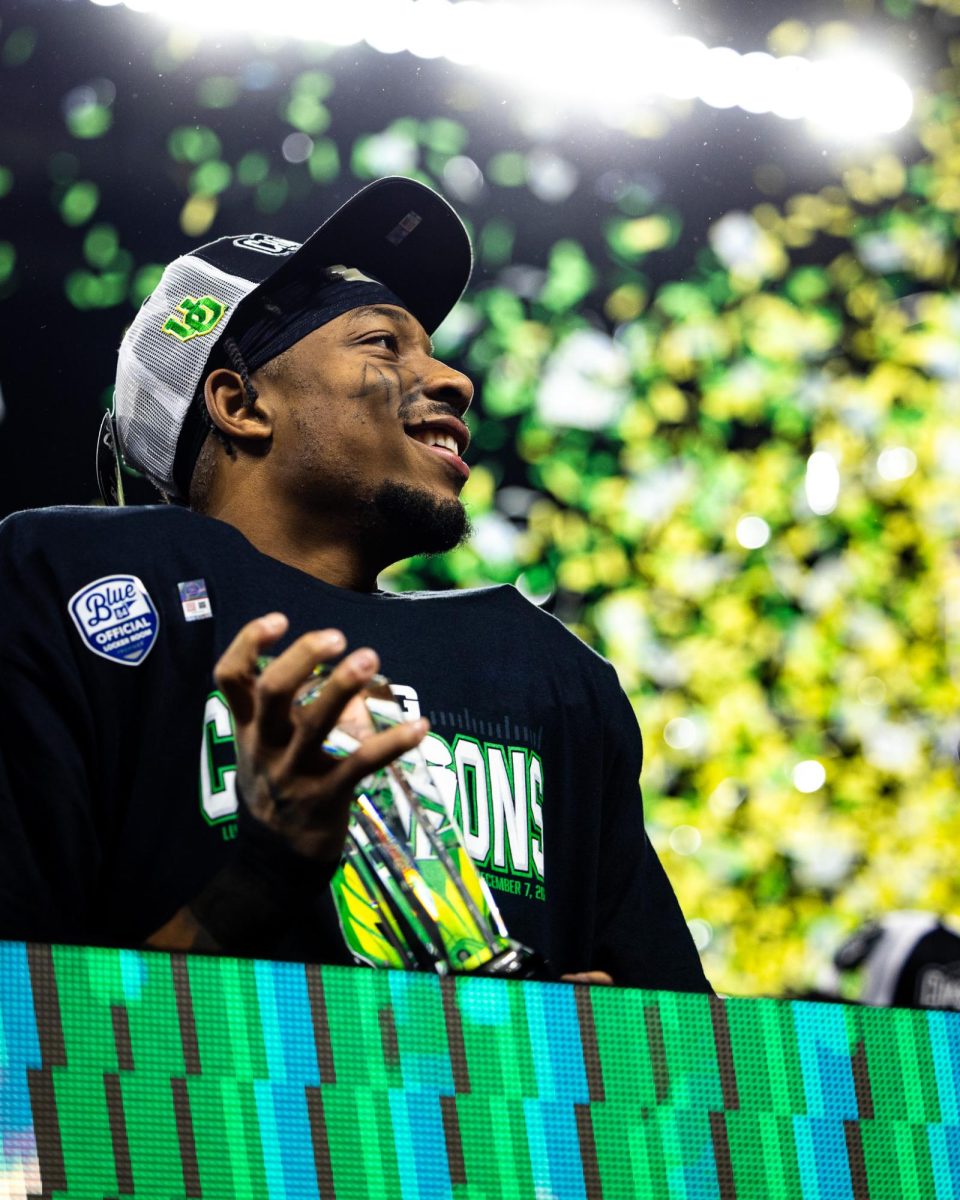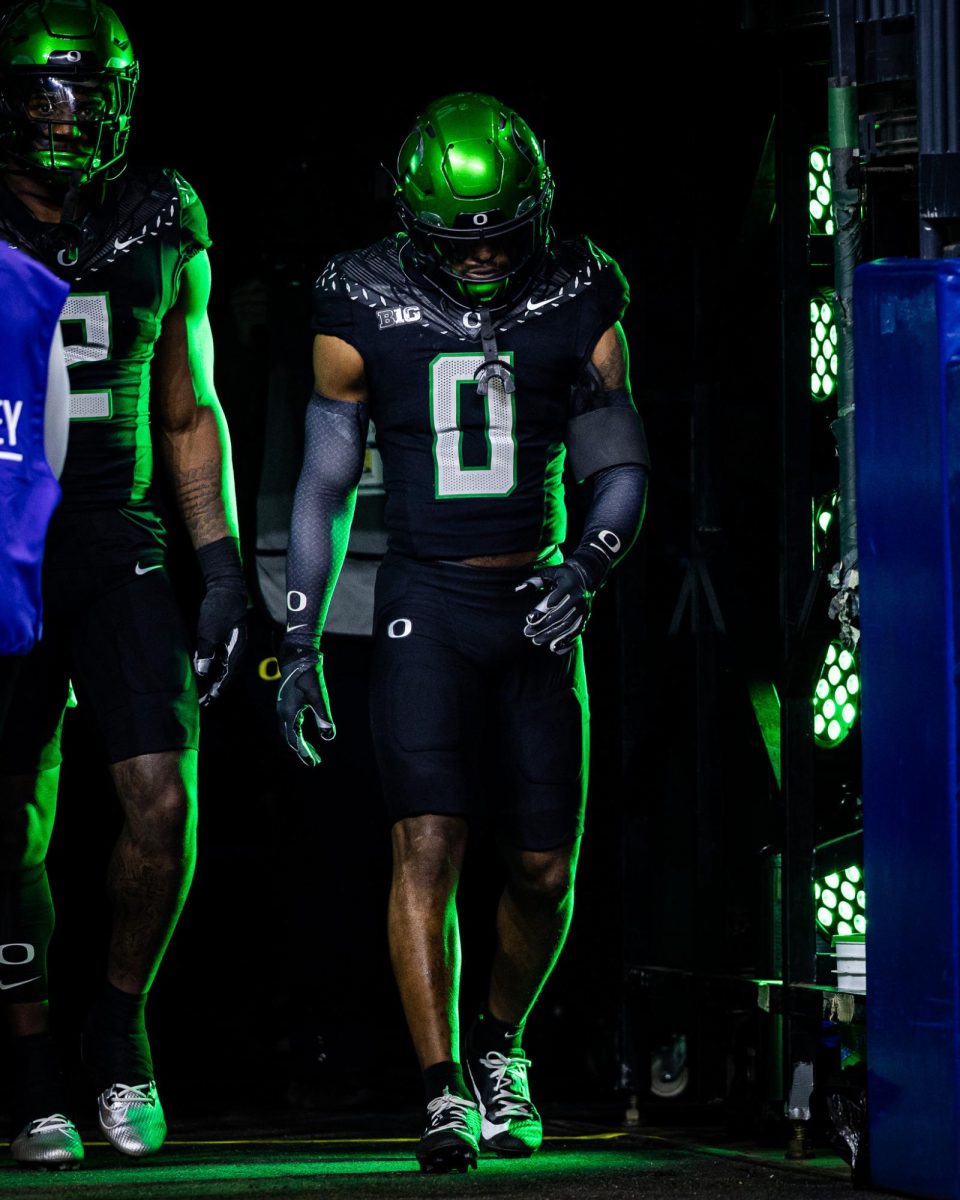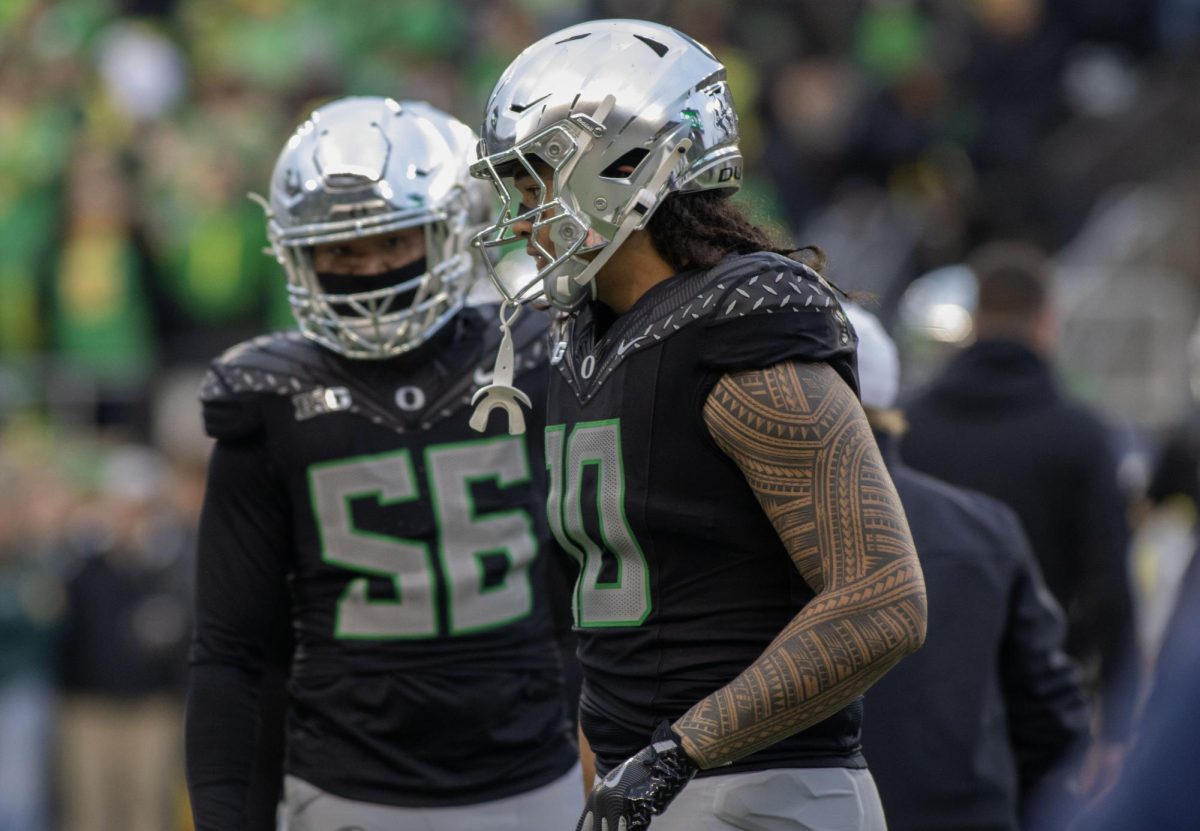It was all too similar.
The first half of Saturday’s game in Stanford Stadium brought back memories far more recent than they seem.
The Ducks began the game lethargically, with Camden Lewis’s opening kick stumbling out of bounds. Stanford immediately dominated, going on a methodical 15-play, field-goal drive ticking off more than half of the first quarter of play.
Oregon responded with torpor. The Ducks head coach Dan Lanning characterized the team in the week before the game as “needing to bring their own juice” because of the lack of crowd noise. However, Oregon looked voiceless early against the Cardinal.
The Ducks’ defense looked tired and staggered to allow another Cardinal field goal, taking six minutes off the clock. Stanford had traveled 97 yards before Oregon had a first down.
For Oregon, the script had flipped. The Ducks had gone through their first four weeks largely unscathed, outscoring opponents 258-59 and another upset to the Cardinal seemed on the horizon.
The similarities were uncanny to Stanford’s upset of then No. 3 Oregon in 2021. The Ducks looked hapless on the road with Oregon’s offense unable to stay on the field. The Cardinal looked energized, trailing by just a score at the half.
And then Stanford became Stanford and Oregon remembered it was Oregon.
Once known as “tight end university” with eight tight ends drafted to the NFL since 2010, previous head coach David Shaw’s teams were known for their physicality and toughness.
That physicality and toughness was nowhere to be found Saturday night as the Cardinal, with their 42-6 loss to Oregon, fell to 1-4 in 2023 under first-year head coach Troy Taylor.
Following Stanford’s second field goal of the game, the Ducks scored 42 consecutive points. Uncontested.
After all, long gone are the days of Shaw in Palo Alto. Long gone are Stanford’s days of dominance on the football field. The Cardinal, who has yet to win over four games since 2018, are the college football equivalent of a dumpster fire.
But what a run it was.
Three Pac-12 football titles in four years led by first-round picks Andrew Luck and Christian McCaffrey, the latter of whom, along with Bryce Love, were selected as Heisman trophy finalists.
Capped off by Rose Bowl victories in 2013 and 2016, Stanford was a prototype of how to run a college football program, with the Cardinal appearing in 10 straight bowl games.
In 2018, following the Cardinal’s 9-4 season which culminated in a Sun Bowl victory over University of Pittsburgh, Shaw’s program looked promising.
Then it all fell apart.
Since Stanford’s upset in 2021, the two programs have gone in completely different directions. Oregon, which is now 5-0 and 15-3 under Lanning, has been rejuvenated. The Cardinal, which has won just one Pac-12 game since the upset, has been a disaster marked by Shaw’s abrupt departure from the program at the end of last year.
“It’s like a dream,” Shaw said of his tenure as Stanford head coach in his farewell press conference last year. “Holding up that Rose Bowl trophy two times, standing there with my family. Like a dream.”
Well, Stanford’s last five years have been a nightmare.
With the Cardinal struggling to adjust to college football’s current transfer portal and NIL-led climate, the once powerful program has turned pedestrian. The Cardinal, whose 2023 recruiting class ranks just 62nd nationally according to 247Sports, brought in just four transfer players for the 2023 season. Oregon brought in 15.
The Ducks are far from perfect but with Oregon starting 5-0 for the first time since 2013, things are looking a whole lot better in Eugene. Lanning has Oregon rolling in his second season at the helm.
“We’re not going into a bye week,” Lanning said after the game to GoDucks. “Our guys know what our goals are [and] what we have to accomplish right. A lot of other teams are going to relax this week; we’re going to get better.”
The Ducks now rank second nationally in scoring offense and play with a smash-mouth identity.
Stanford used to have an identity, too: an expectation for greatness. But on Saturday night in front of an attendance of 32,160 people, those times seemed oh-so-distant.








